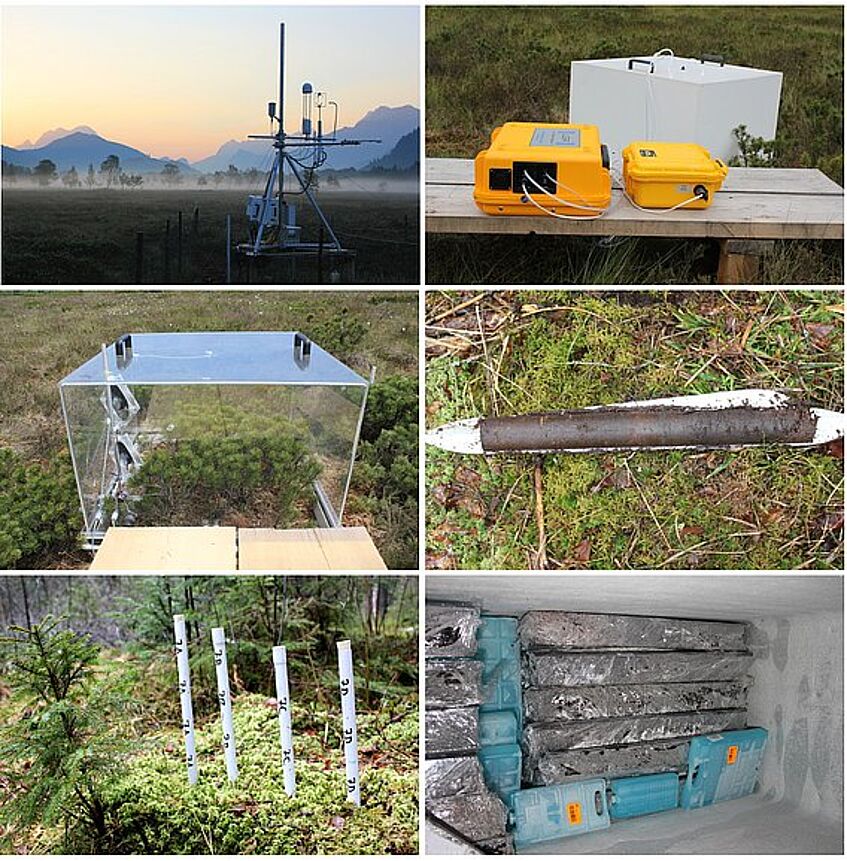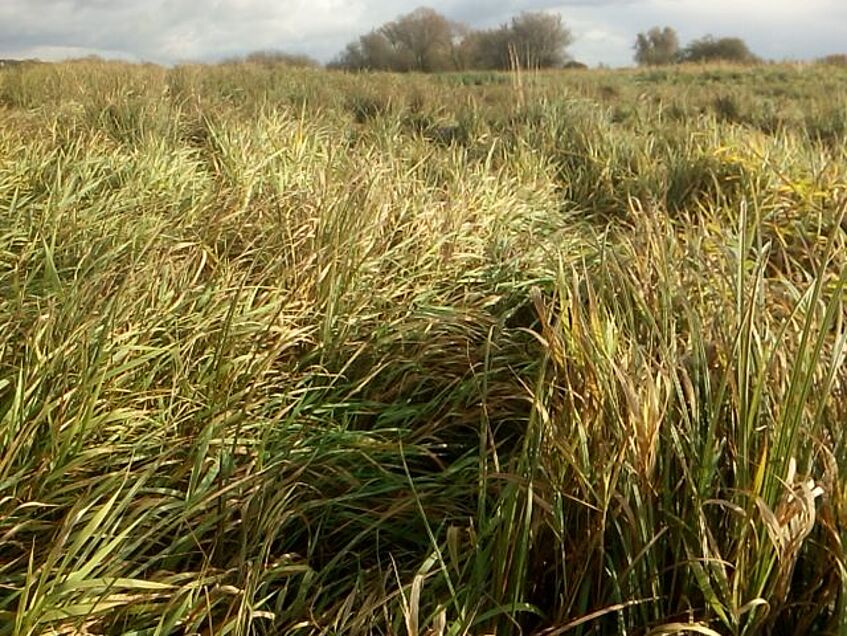Completed projects
MOIST – Recording Austria's degraded peatlands and assessing their suitability for restoration
The MOIST project is concerned with recording degraded peatlands in Austria and assessing their suitability for regeneration measures. The focus is on the recording of peatland areas and peat soils, based on the intersection of different data bases, the development of models and supplementary surveys in the field. The result should be distribution maps of organic soils, which will be used in a further step to develop a catalogue of criteria for the possibilities of rewetting measures. This is intended to achieve the overarching goals of the Austrian Mire Strategy 2030+ and the Biodiversity Strategy in order to preserve or restore important ecosystem services.
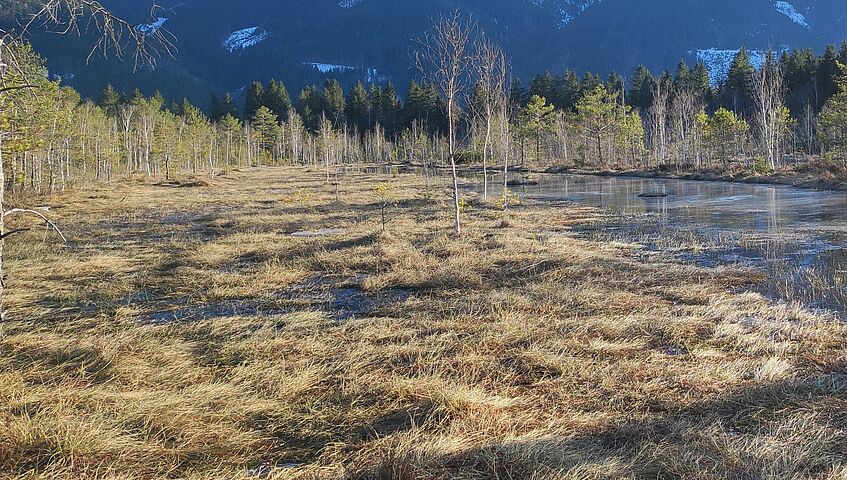
Pichlmaier Moor (c) Raphael Müller

Can the rewetting of drained, nitrogen contaminated peatlands reduce EU-wide greenhouse gas emissions and improve wetland biodiversity? Peatlands represent 2.5% of all agricultural land in the EU, but ~ 25% of agricultural greenhouse gas (GHG) emissions, and ~ 5% of total EU-wide GHG emissions. The rewetting of peatlands has been found to reduce, or even reverse, carbon dioxide (CO2) and nitrous oxide (N2O) gas emissions, the most common and potent GHGs respectively.
In the framework of the infrastructure project LTER-CWN (2017-2022), six characteristic sites in Austria are expanded into state-of-the-art measuring stations of ecological research. The investigations focus on the effects of extreme climate events on the environment.
Is it possible to use peat moss (Sphagnum) as a substitute material for peat in horticultural substrates? The working group Geoecology from the University of Vienna is currently dealing with the investigation of physical and chemical properties of harvested moss biomass (2018-2020).
Carbon-Cycling in Alpine Peatlands
The carbon fluxes and bog degradation in the Pürgschachenmoor in the Styrian Ennstal were investigated.
Dissertation projects
Pamela Baur is working on quantifying and improving the process understanding of methane, carbon dioxide and water vapor fluxes in the reed belt of Lake Neusiedl.
Raphael Müller deals with the degradation of organic matter by soil microorganisms under the special conditions of the saline Lake Neusiedl.

(c) Geoecology
ReVersal (Restoring peatlands of the nemoral zone under conditions of varying water supply)
The ReVersal project aims to develop a indicator framework for peatland restoration success across peat bog sites affected by drainage and/or extraction. This will be achieved by the consideration of biological and biogeochemical conditions, greenhouse gas fluxes, and biodiversity along degradation and restoration trajectories s. Based on this consideration, uncertainties of conservation and restoration approaches will be evaluated and adaptive management strategies considering trade-offs between restoration goals will be developed. These strategies can be transferred across landscapes via remote-sensing based models.
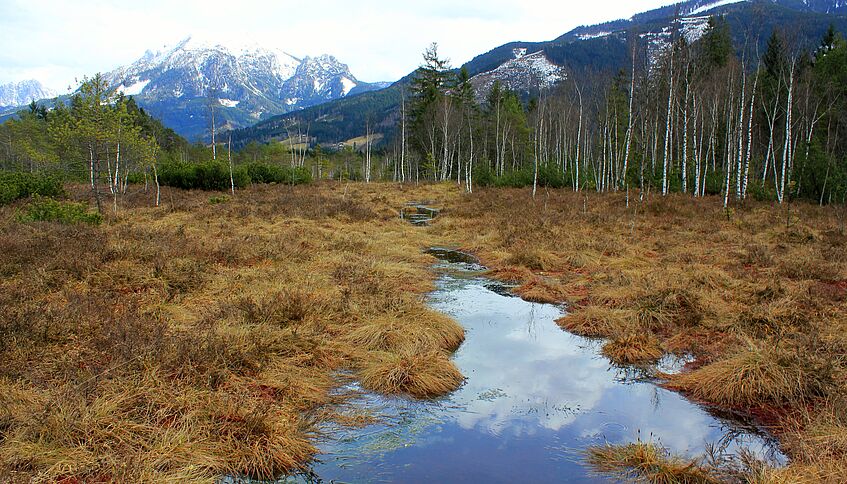
Pichlmeier Moor (c) Simon Drollinger
BraMaSchi - Carbon monitoring after the Jois reed fire as part of the reed belt fire management pilot project
The aim of this project, which is being led by the Biological Station Neusiedler See, is to determine the actual extent of a reed burn - particularly in terms of the carbon balance and air pollutant emissions. To this end, several hectares of an area of the Lake Neusiedl reed belt near Jois, which was predominantly covered by old reed, were burned on 13 January 2024. Together with the Institut für Waldbau (BOKU), we are investigating the carbon balance in order to accurately estimate the biomass discharge and to be able to make profound statements about the framework conditions for future fire management.

Burnt area in the reed belt of Lake Neusiedl (c) Andreas Maier
Tracking down Austria's peat in the PeatGOV-Austria project
Researchers in the new PeatGOV-Austria project, funded by the Austrian Climate Research Program (ACRP), are studying how best to keep peat in the field. The research teams from the Working Group Geoecology of the University of Vienna and the University of Natural Resources and Applied Life Sciences (BOKU) are working together on the question "How large is the greenhouse gas emission from agriculturally used peatland and what could climate-appropriate management of the land look like."
Project Loess-Paleosol-Map of Lower Austria
In this project of the Lower Austrian government the distribution of the different loess types of Lower Austria and their included paleosols will be presented in a digital map. The data will be stored in a geo-information system and will be able to be continuously supplemented and adapted for different uses.
PALUS - Potential of Paludiculture in Austria
PALUS tries to establish paludic cultures in Austria. We deal with the wet agricultural and forestry use of bogs. One goal of paludiculture is to restore the carbon storage in the bogs and to protect and use the bogs.
Land use and soil erosion during the period of prehistoric agriculture in Southeastern USA
The proposed research project aims to explore erosion forms, colluvial sediments and buried soils in selected 0-order and 1st-order watersheds in the Southeastern USA in order to gain, solidify, and evaluate general data on soil erosion during the Native American land use period and its respective long-term effects on the environment.
(2012-2015).
WALD-WASSER-WEINviertel
Rainfall variability and its impact on forests and agricultural harvest in the Weinviertel in the past, present and future (2010-2012).
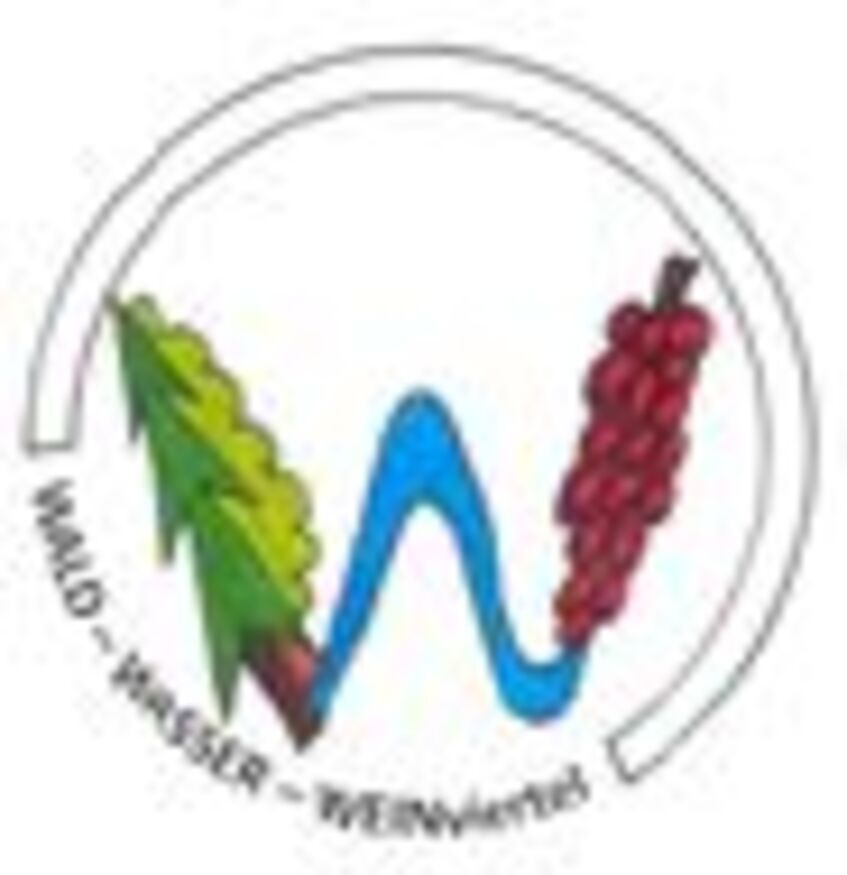
Project list in u:cris
Projekt Rechnitz V (Nationalfonds)
Peticzka, R. (Project Lead) & Wohlschlägl, H. (Admin)
1/07/06 → 31/12/06
Project: Research funding
PALUS: Studien und Investitionen zur Erhaltung, Wiederherstellung und Verbesserung des natürlichen Erbes
Glatzel, S. (Project Lead), Tyjan, A. (Admin) & Karer, J. (Project Staff)
1/09/16 → 31/01/19
Project: Research funding
LTER-CWN: Long-Term Ecosystem Research Infrastructure for Carbon, Water and Nitrogen
Glatzel, S. (Project Lead), Tyjan, A. (Admin) & Maier, A. (Scientific Project Staff)
1/04/17 → 31/03/22
Project: Research funding
Torfmoose in Paludikulturen
Glatzel, S. (Project Lead) & Müller, R. (Scientific Project Staff)
1/12/18 → 1/12/20
Project: Contract research
Peat-Gov Austria: Governance options for climate smart agriculture on Austrian peatlands
Glatzel, S. (Project Lead) & Kroisleitner, C. (Scientific Project Staff)
1/12/20 → 30/06/23
Project: Research funding
PRINCESS: Restored peatlands under nitrogen pressure
Glatzel, S. (Project Lead) & Boodoo, K. (Scientific Project Staff)
1/02/21 → 31/01/25
Project: Research funding
Restoring peat bogs in Central Europe
Glatzel, S. (Project Lead) & Jeelani, N. (Scientific Project Staff)
1/04/22 → 31/03/25
Project: Research funding
poWer: portable Wind tunnel for erosion measurement
Peticzka, R. (Project Lead)
1/12/22 → 31/05/23
Project: Research funding
LTER-CWN data paper: Part Wetland Sites
Glatzel, S. (Project Lead)
1/01/23 → 31/01/24
Project: Research funding
Kohlenstoff-Monitoring nach Schilfbrand Jois im Rahmen des Pilotprojekts Brandmanagement Schilfgürtel (BraMaSchi)
Glatzel, S. (Project Lead) & Maier, A. (Co-Lead)
1/01/24 → 15/05/24
Project: Contract research
MOIST - Erfassung degradierter Moorflächen Österreichs und Beurteilung ihrer Eignung zur Regeneration (MORE)
Glatzel, S. (Project Lead), Wrbka, T. (Co-Lead), Hummel, C. (Project Lead) & Müller, R. (Project Staff)
1/01/24 → 31/10/25
Project: Research funding



